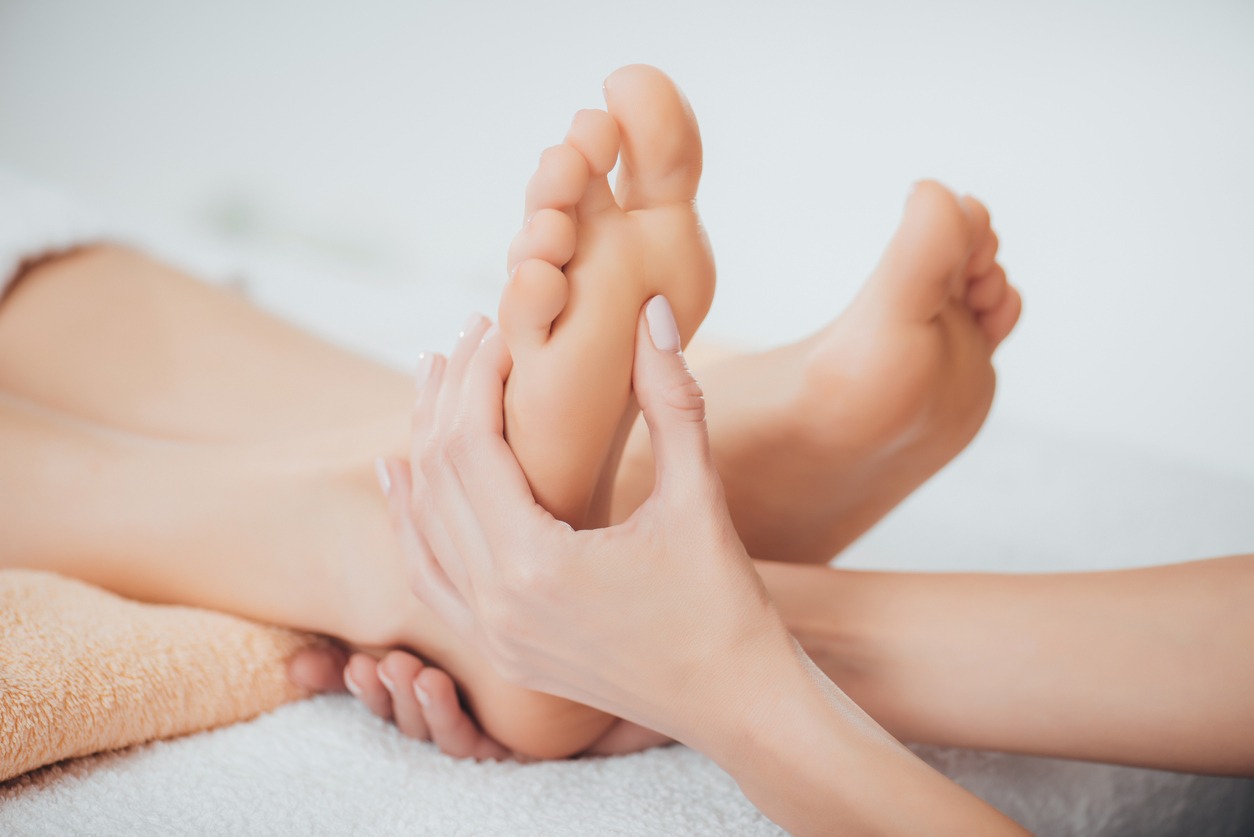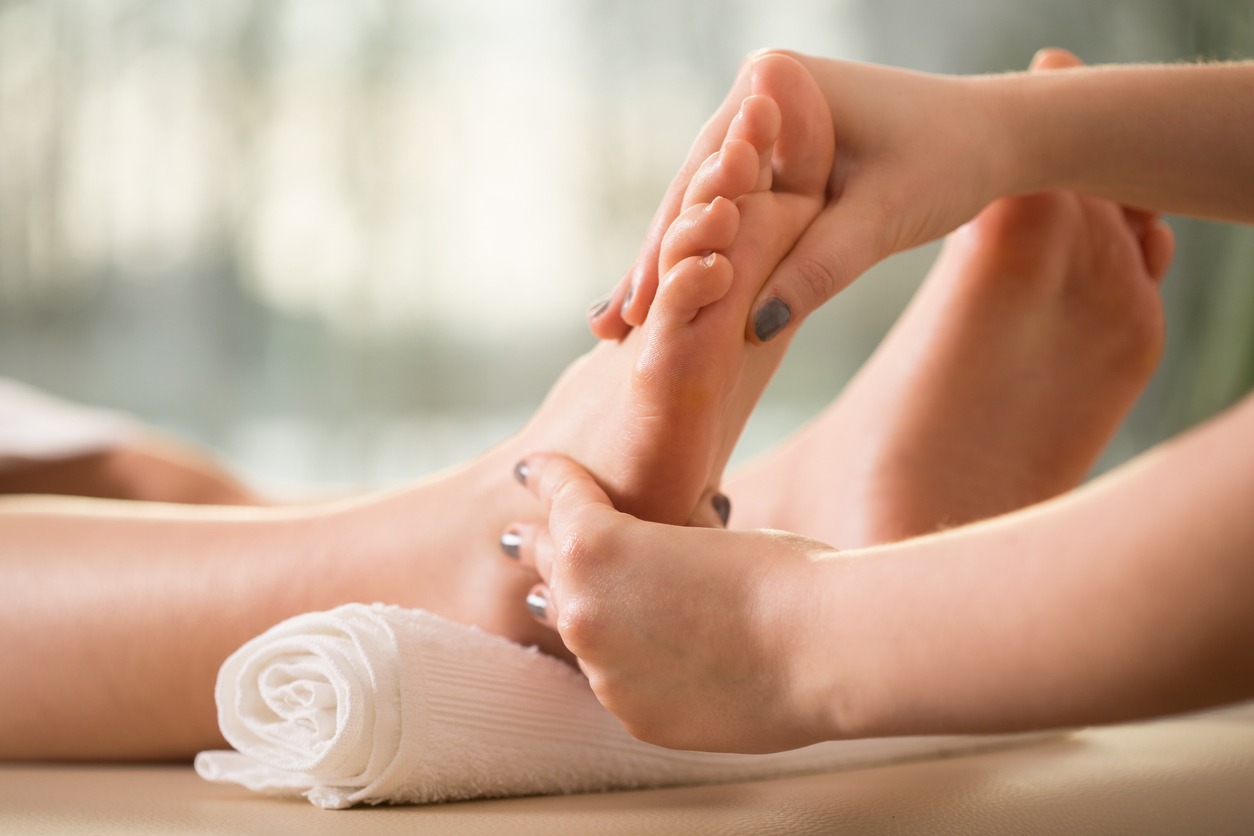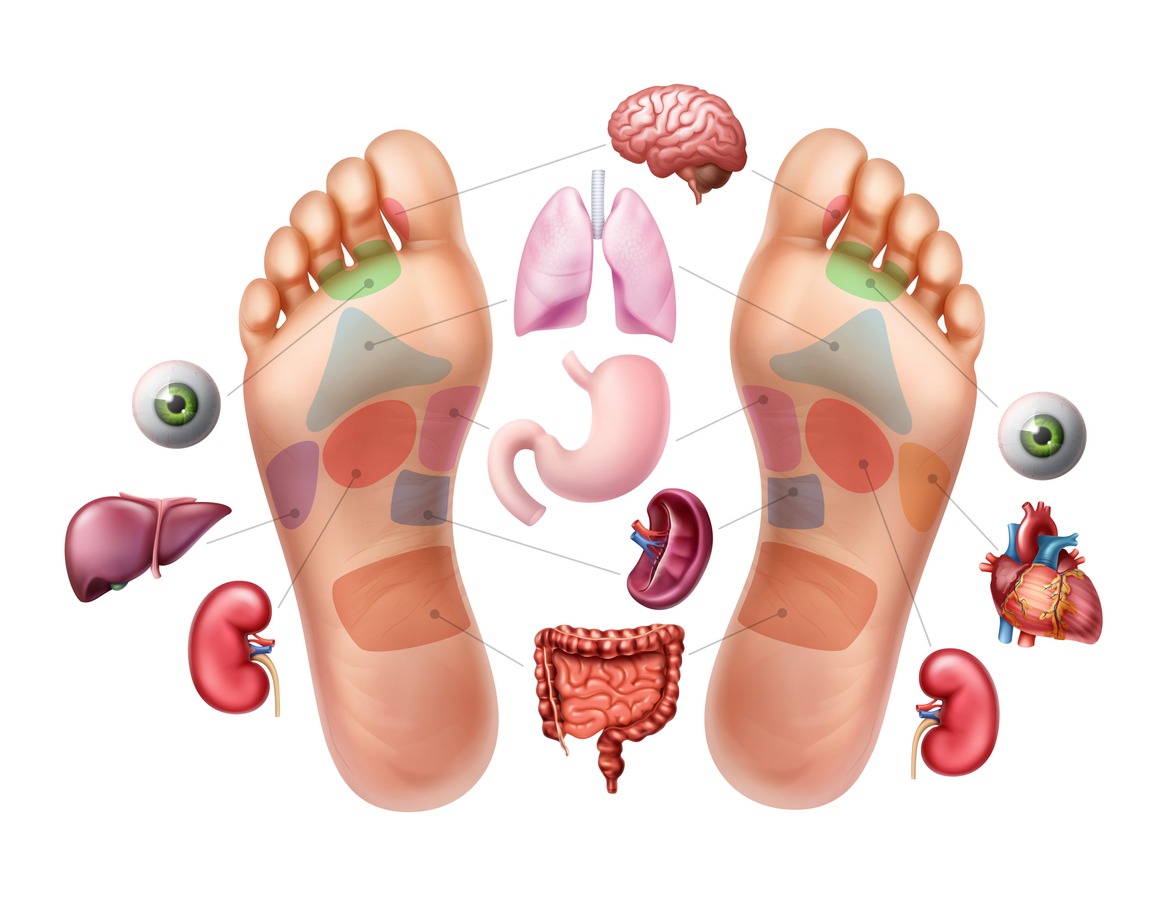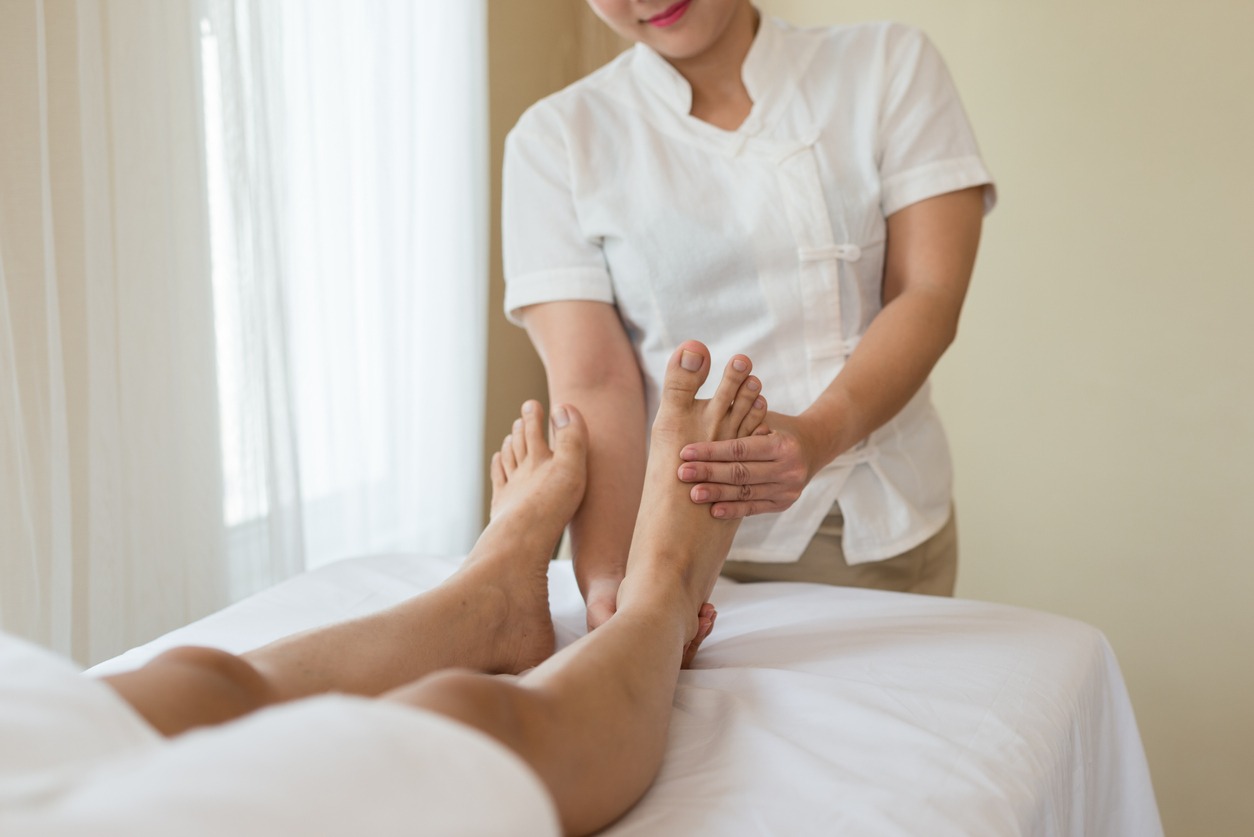When it comes to pains and aches that we feel in our body, foot pain is arguably one of the most common. Foot pain is generally felt whenever we use our feet too much while exercising, working, playing sports, and standing for many hours.
While the pain on our feet is typically isolated and does not affect other parts of our body, there are certain instances where the pain worsens and may reach our legs, chest, arms, and head. In situations where you feel a lot of pain in different parts of your body, then you may need to apply an alternative medical practice called foot reflexology. In this blog post, we’ll cover all the basics so that you can understand what foot reflexology truly is and how it might benefit your own well-being.
What is Foot Reflexology?
Foot reflexology is an ancient form of massage that helps alleviate stress in the body by applying pressure to the feet. By stimulating certain zones or areas on the feet called “reflex points,” the massage can help reduce tension, increase blood circulation, and bring relief from soreness or stiffness of the muscles. It is important to note that foot reflexology cannot be a substitute for medical treatment and should only be considered as a supplement or a complementary form of treatment.
The massage is done by a masseuse or practitioner using his or her fingers without the use of lotion or oil, which is usually applied to other types of massages. The “reflex points” of your feet can affect the status of other parts of your body. For example, if you massage the middle area of your toes, you are also somehow massaging your sinuses so that they will feel less clogged if you are frequently suffering from sinusitis. You can refer to the foot reflexology chart above so you will know which areas of your feet should be massaged to relieve pain from specific parts of your body.
Brief History of Foot Reflexology
The origins of foot reflexology are blurry, as there is no definitive proof or evidence of how the practice started and where it came from. However, it is believed that reflexology was around before 1,000 BC, which is also the same time period when the “Yellow Emperor’s Classic of Internal Medicine” was written in China. In the said text, there was a chapter called “Examining Foot Method” that discussed the connection of different body parts to the areas of the feet.
It is also speculated that Marco Polo, a renowned Venetian merchant and explorer who traveled to Asia between 1271 and 1295, translated the “Yellow Emperor’s Classic on Internal Medicine” from Chinese to Italian during the 1300s. [1] The translated text then began circulating throughout Europe, and foot reflexology eventually became a popular practice in the continent.
It was Dr. William H. Fitzgerald, considered to be the “Father of Reflexology,” who introduced foot reflexology in the United States when he wrote a study in 1917 about “Zone Therapy” and how massaging the feet can relieve pain and soreness on specific parts of the body. An apprentice or student of Dr. Fitzgerald, Dr. Joe Shelby Riley, expanded upon his mentor’s findings by adding more “reflex zones” on the feet and hands that correspond to different body parts.
The foot reflexology chart that is widely used by many practitioners and experts today was developed by Eunice D. Ingham in the 1930s. Ingham worked for Dr. Riley and tried to improve his work by refining the definition of “reflex zones.” She would explain the modern definition of “reflex zones” in detail in her first book titled “Stories the Feet Can Tell,” which was published in 1938. Ingham was instrumental in re-introducing “Zone Therapy” to the public and popularizing it not only in the United States but also in other countries. [2]
Benefits of Foot Reflexology
Foot reflexology has numerous benefits, and these benefits are connected to the simple idea that massaging certain areas of your feet can help improve your well-being. Here are details about the benefits of foot reflexology.
Pain Relief
The main benefit of foot reflexology is that it can be used to alleviate pain not only on the feet but also on other parts of your body. By applying pressure to specific points on the feet, foot reflexology can help to release tension and reduce inflammation or soreness in the body. This form of massage can help to alleviate pain caused by conditions such as arthritis, fibromyalgia, and back pain. You can refer to the foot reflexology chart and see which area of your feet you can massage to relieve pain in a specific body part.
Improved Blood Circulation
Another benefit of foot reflexology is improved blood circulation. By stimulating the points on the feet that correspond to the organs connected circulatory system (like the heart), foot reflexology can help to improve the flow of blood and oxygen throughout the body. The massage can help to reduce the risk of blood clots, varicose veins, and other problems that may occur in the circulatory system.
Improved Digestion
In addition to the circulatory system, the digestive system can also benefit from foot reflexology, as massaging an area of the feet that are connected to the stomach, the intestines, and other digestive organs can help improve digestion. With foot reflexology, you will reduce the risk of getting constipation, ulcers, and other digestive problems.
Improved Immunity Against Diseases and Infections
The immune system can be improved through foot reflexology. Our immune system is our first line of defense when it comes to fighting bacteria, fungi, viruses, and other harmful elements, so when this system begins to get weaker, we will be more susceptible to different kinds of illnesses or diseases. By massaging or stimulating the “reflex points” on your feet that correspond to your immune system, you can help the system stay healthy to fight off disease and infection.
Stress Relief
When you are experiencing headaches and body pain due to stress, you will be able to reduce or eliminate those symptoms by simply applying pressure to the areas of your feet that are connected to the body parts affected by stress, like the head and the nerves. What’s interesting is that a regular foot massage can already relieve stress while also reducing pain in your foot, but with the added knowledge of foot reflexology, you will also be able to reduce headaches, migraines, fatigue, and other pains and aches that occur due to stress.
But if you do not have time to visit a reflexologist, you can also choose to use a foot massage at home instead for relaxation. You may check out our article about the Types of Foot Massagers to know what options you have.
What to Expect in Your First Reflexology Session
Now that you know more about foot reflexology and its benefits, then it may be time for you to experience your first reflexology session. You should find a reliable foot reflexology expert in your area so that you will have the best experience, and you can find out about the reliability of the practitioner by searching for reviews and feedback from his or her previous and current customers.
Once you have found the best foot reflexology practitioner, you may need to prepare for things that will happen during the session. Here is what you should expect in your first reflexology session.
- The foot reflexology expert may ask you about your health history, which includes the illnesses or diseases that you may have gotten in the past or currently have. By knowing your health history, the practitioner can then apply a specific therapy that will be more effective for you.
- The practitioner will begin to explain the therapy that he or she will apply to your feet and hands. After the explanation, he or she may ask you to sign a consent form.
- If you have any questions, it is the perfect time to do so before the actual therapy or session begins. The practitioner should be able to answer all of your questions regarding foot reflexology.
- The practitioner will ask you to lie down comfortably on a massage table while he or she performs the therapy.
After the session, the foot reflexology expert may ask you how you feel and if any pain or discomfort that you are experiencing in specific areas of your body is alleviated. The next best thing to do once the session is over is to simply give your body a rest so that the effects of the foot reflexology session would remain for a few hours.
If you are looking for an alternative way to manage pain in your body or improve your overall well-being, then consider giving foot reflexology a try. Always make sure you find a qualified and reliable foot reflexology practitioner so that you get the most out of each session.
If ever you do not have time for a reflexology session, you can instead buy a foot massager that you can use at home. You may check out our Guide to Selecting Foot Massagers for more information.
References
[1] Teagarden, K. (n.d.). What Is the History of Reflexology? University of Minnesota Earl E. Bakken Center for Spirituality & Healing. Retrieved January 27, 2023, from https://www.takingcharge.csh.umn.edu/history-reflexology
[2] Bayen, R. (2017, October 7). Foot Reflexology: Not Just a Foot Massage. Osmosis Day Spa Sanctuary. Retrieved January 27, 2023, from https://www.osmosis.com/blog/tag/dr-joe-shelby-riley/






